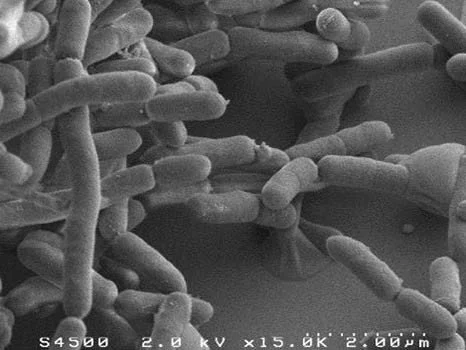ASD Bacteria
The microbes displayed on this webpage are significant in the dysbiosis of children affected by autism spectrum disorder. An asterisk (*) indicates a higher prevalence of that specific bacterium or group of bacteria in children with ASD, according to our comparative microbiome analysis of ASD and unaffected cohorts of children. No asterisk indicates a lower relative abundance in children with ASD compared to unaffected children.
-

Faecalibacterium prausnitzii *
Faecalibacterium prausnitzii can be found in higher abundances in patients with ASD compared to unaffected patients.
Taxonomic Level: Species
Family: Ruminococcaceae
Properties: Gram-positive, Anaerobic
Additional Information: Faecalibacterium prausnitzii has some notable benefits to your health by being an anti-inflammatory agent, but it is also associated with ASD and IBD. Faecalibacterium prausnitzii is a one of the major producers of butyrate, a short-chain fatty acid. Butyrate has many beneficial implications at low levels but has been associated with stress-like responses and major depressive disorders at high levels (>1,000 mg/kg). Faecalibacterium prausnitzii abundances can be decreased by limiting intake of fried food and increasing consumption of fruits.
-

Adlercreutzia *
Adlercreutzia is a genus of bacteria that is found in higher abundances in patients with ASD compared to unaffected patients.
Taxonomic Level: Genus
Family: Coriobacteriaceae
Properties: Gram-positive, Anaerobic, Nonsporulating
Additional Information: There has not been much research done on Adlercreutzia in relation to ASD, but it is known to be a producer of equol. Equol has some protective properties in regulating neuron inflammation but can also interfere with synaptic pruning. Synaptic pruning occurs in early childhood, and it is the process of removing unnecessary synapses. It has been hypothesized that patients with ASD had complications with synaptic pruning that resulted in an abundance of synapses.
-

Bifidobacterium
Bifidobacterium is a genus of bacteria that can be found in lower abundances in patients with ASD compared to unaffected patients.
Taxonomic Level: Genus
Family: Bifidobacteriaceae
Properties: Gram-positive, Anaerobic, Nonsporulating, Fermentative
Additional Information: Bifidobacterium has many benefits including producing lactic acid to suppress the growth of pathogens in the gut, which positively influences the connection between the gut and brain. Additionally, Bifidobacterium produces many helpful metabolites such as vitamins and polyunsaturated fatty acids to help regulate the immune system. Many of these benefits are lacking in patients with ASD because of the low abundance of Bifidobacterium in their gut. However, with the use of probiotics, patients with ASD have been known to increase their abundance of Bifidobacterium.
-
Ruminococcus *
Ruminococcus is a genus of bacteria that is found in higher abundances in patients with ASD compared to unaffected patients.
Taxonomic Level: Genus
Family: Ruminococcaceae
Properties: Gram-positive, Anaerobic, Fermentative
Additional Information: Ruminococcus is a genus of bacteria that is found in higher abundances in patients with ASD compared to unaffected patients. One of its main species is Ruminococcus torques, which is a butyrate producer. Butyrate has many beneficial implications at low levels but has been associated with stress-like responses and major depressive disorders at high levels (>1,000 mg/kg). Ruminococcus torques was also seen in correlation with high levels of mucin-degrading enzymes. High levels of mucin-degrading enzymes can indicate a thinner GI mucus tract, and mucin-degradation produces butyrate, which is unhealthy at high abundances. To decrease your abundance of Ruminococcus, you should increase consumption of vegetables, legumes, nuts, seeds, and fruits and limit your intake of sweets.
-
Clostridium *
Description goes here -
Dorea *
Description goes here -
Akkermansia muciniphila
Description goes here -
Sutterella *
Description goes here -
Lachnospiraceae *
Description goes here -
Blautia *
Description goes here -
Anaerostipes hadrus *
Description goes here -
Bacteroides
Description goes here -
Alistipes putredinis
Description goes here -
Eubacterium *
Description goes here -
Parabacteroides
Description goes here -
Collinsella *
Description goes here -
Tyzzerella nexilis *
Description goes here -
Eggerthella *
Description goes here -
Clostridioides difficile *
Description goes here -
Coprococcus catus *
Description goes here

